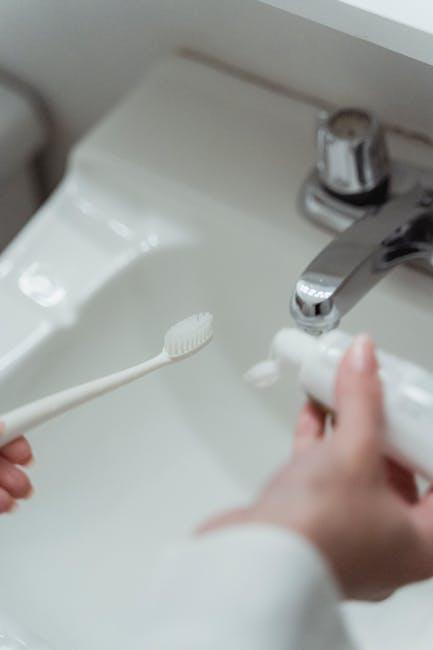FDA and RFK Jr. Aim to Remove Ingestible Fluoride Products Used to Protect Kids’ Teeth
The use of fluoride in dental care has long been a topic of both acclaim and controversy. Recently, the U.S. Food and Drug Administration (FDA) in conjunction with environmental attorney and activist Robert F. Kennedy Jr. (RFK Jr.) have called for the removal of ingestible fluoride products marketed to protect children’s teeth. This bold move brings fresh attention to children’s dental health, fluoride safety, and the evolving regulatory landscape surrounding fluoride use. In this article, we’ll explore the background, reasons behind this initiative, and what it means for parents, dental professionals, and children nationwide.
What Are Ingestible Fluoride Products?
Ingestible fluoride products include supplements such as fluoride tablets, drops, and vitamins that are specifically designed to be consumed orally in order to prevent tooth decay in children. These products have been used primarily in communities lacking adequate fluoride in their water supply. Typically recommended by pediatricians or dentists, these supplements aim to strengthen tooth enamel and reduce cavities.
Common Types of Ingestible Fluoride Products
- Fluoride tablets and lozenges
- Fluoride drops (liquid supplements)
- Fluoride-enhanced vitamins
FDA’s Position and RFK Jr.’s Advocacy
The FDA is responsible for ensuring the safety and efficacy of drugs and supplements sold in the United States. Historically, fluoride ingestible products have been approved for use, but emerging research has raised questions about potential risks associated with their consumption, especially among children.
Robert F. Kennedy Jr., known for his environmental activism and vocal stance on health safety issues, has aligned with consumer safety advocates and some medical professionals urging the FDA to reevaluate and ultimately revoke approvals for these ingestible fluoride products. The concern centers on possible overexposure to fluoride which can lead to dental fluorosis, skeletal issues, and other health complications.
Key Reasons for Removal Push
- Risk of dental fluorosis from excessive fluoride intake
- Limited added benefit in communities with fluoridated water supplies
- Concerns over improper dosing and accidental ingestion by young children
Benefits and Risks of Fluoride for Children’s Teeth
Fluoride is widely credited for helping reduce the prevalence of tooth decay over the past several decades. However, like any preventive agent, its usage must be balanced carefully to maximize benefits while minimizing risks.
Benefits
- Prevents cavities: Fluoride strengthens tooth enamel and can reverse early tooth decay.
- Cost-effective: Community water fluoridation and fluoride toothpaste have significantly reduced dental costs.
- Easy application: Toothpaste and topical fluoride products are safe when used properly.
Risks of Excessive Fluoride
- Dental fluorosis: White spots or discoloration of permanent teeth due to overexposure during enamel formation.
- Possible skeletal concerns: Though rare, long-term overexposure has been linked to bone issues.
- Health concerns: Ongoing research explores links between fluoride and neurological effects, though consensus is not yet definitive.
What This Means for Parents and Caregivers
As the FDA considers regulatory changes, parents and caregivers should stay informed and practice prudent use of fluoride products. Here are some practical tips to safeguard your children’s dental health:
Practical Tips for Fluoride Use
- Use fluoride toothpaste appropriately: For children under three, use a smear the size of a grain of rice. For ages 3-6, use a pea-sized amount.
- Consult your pediatrician or dentist: Before starting any fluoride supplement, discuss your child’s specific risk of tooth decay and fluoride sources.
- Monitor fluoride sources: Be aware of the total fluoride intake from water, toothpaste, mouth rinses, and dietary supplements.
- Avoid swallowing toothpaste or supplements: Supervise young children to prevent ingestion mishaps.
Table: Fluoride Sources & Possible Intake for Children
| Fluoride Source | Typical Fluoride Content | Recommended Use |
|---|---|---|
| Community Water | 0.7 mg/L (optimal level) | Safe for drinking and cooking |
| Fluoride Toothpaste | 1000-1450 ppm | Use small pea-sized amount for kids |
| Fluoride Supplements | Varies by product | Only if prescribed by dentist/doctor |
| Fluoride Mouth Rinse | 230 ppm (typical) | Not recommended for children under 6 |
Expert Opinions and Case Studies
Several dental associations, including the American Dental Association (ADA), continue to endorse fluoride for cavity prevention, emphasizing topical rather than systemic fluoride use in most cases. However, dental experts agree on the importance of monitoring fluoride exposure in young children to avoid fluorosis.
Case studies in communities with naturally high fluoride levels in water have demonstrated increased dental fluorosis rates, resulting in changes to public health policies in those regions. The FDA’s current review aims to address such disparities in risk management related to fluoride supplements and other ingestible products.
Firsthand Experiences: Parental Perspectives
Many parents have shared mixed feelings about fluoride supplements over the years. While some praise their effectiveness in preventing decay, others are concerned about potential side effects and prefer alternative dental care regimens emphasizing diet and topical treatments.
“After learning about fluoride exposure risks, I decided to stop fluoride drops for my toddler and now focus on proper brushing and nutrition. It’s been a balancing act, but I feel more confident about managing my child’s oral health without supplements.” – Jessica M., Mom of two
Conclusion: Navigating the Future of Fluoride Use for Children
The FDA and RFK Jr.’s initiative to remove ingestible fluoride products signals an important shift in how dental health interventions are regulated and perceived. While fluoride remains a critical tool for preventing tooth decay, the method of administration and dosing for children must prioritize safety above all. Parents, healthcare providers, and policymakers should work collaboratively to ensure children receive effective, evidence-based dental care tailored to their individual needs.
Staying informed about changes in fluoride regulations and maintaining open dialogue with dental professionals will empower families to make wise choices about fluoride use. As science and policy evolve, the ultimate goal remains clear: promoting strong, healthy smiles for every child.


